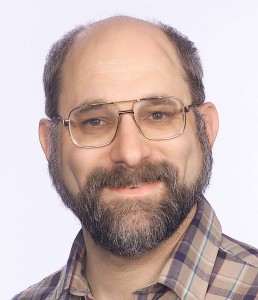 Dr. Curtis Menyuk specializes in the theory and simulation of optical and photonic systems. He is currently interested in short-pulse lasers, optical resonators, and time and frequency measurement and transfer.
Dr. Curtis Menyuk specializes in the theory and simulation of optical and photonic systems. He is currently interested in short-pulse lasers, optical resonators, and time and frequency measurement and transfer.
More than thirty years ago, Dr. Curtis Menyuk became the founding member of the Electrical Engineering Department when he came to UMBC as an associate professor. Now a professor, he specializes in the theory and simulation of optical and photonic systems, including optical fibers, short-pulse lasers, and micro resonators (mm-size optical resonators). A fellow of IEEE, the Optical Society of America, and the American Physical Society, Dr. Menyuk has been interested in photonics for more than thirty years and pursues research in an extensive variety of application areas. He won the 2013 IEEE Photonics Society William Streifer Award and was a 2015–2016 Humboldt Research Fellow at the Max-Planck Institute for the Physics of Light in Erlangen, Germany. Previously, he was a 2008–2009 JILA Visiting Fellow at the University of Colorado in the group that won part of the 2005 Nobel Prize in Physics.
“One of the central themes in my career has been an interest in solitons,” he says. Solitons, explains Dr. Menyuk, are “pulses that move through a medium and due to some combination of non-linearity and dispersion they don’t change shape. They can be made very short with high peak powers and hence can be used in many important applications.” Dr. Menyuk’s interest in solitons began in the eighties when he was participating in collaborative research with Linn Mollenauer, who in 1988 first demonstrated that solitons could exist in optical fibers. They appear in a wide variety of photonic systems like short-pulse lasers and micro resonators.
Currently, Dr. Menyuk is studying models for passively modelocked lasers and microresonators that produce frequency combs. Frequency combs are a set of regularly space frequency lines that act as a frequency ruler and that can be used to measure frequency and time with great accuracy. “These frequency combs are made from extremely short optical pulses (solitons) on the order of 100 femtoseconds (a millionth of a billionth of a second) or less, and they’re used to make very accurate frequency and time measurements,” explains Menyuk. Frequency combs are useful for sensing, telecommunications, and defense and medical applications. The discovery of frequency combs was so important that researchers at the National Institute of Standards and Technology (NIST) in Boulder, Colorado and at the Max Planck Institute in Munich, Germany, shared part of the 2005 Nobel Prize in Physics for this discovery and its application to frequency measurement. Dr. Menyuk has been collaborating with researchers at the National Institute of Standards and Technology (NIST) in Boulder, Colorado on related projects since 2004.
In addition to his work on frequency combs, Dr. Menyuk has been working on optical waveguides and photodetectors with the Naval Research Laboratory, frequency transfer with the Army Research Laboratory, and high-energy laser systems with the Johns Hopkins University Applied Physics Laboratory. He has ongoing collaborations with a wide range of academic institutions. He is the director of UMBC’s Computational Photonics Laboratory, where he and a team of lab colleagues have developed software that is used to model photonic systems and is widely used in industry and academia.